I recently saw some stained-glass mosaics by artist Debra D’Souza, and they reaffirmed my belief in the mosaic business and actually cheered me up after a day of work poop. To explain why Debra’s mosaics make me so happy, I first have to explain a problem that really haunts me as a retailer of arts and craft supplies.
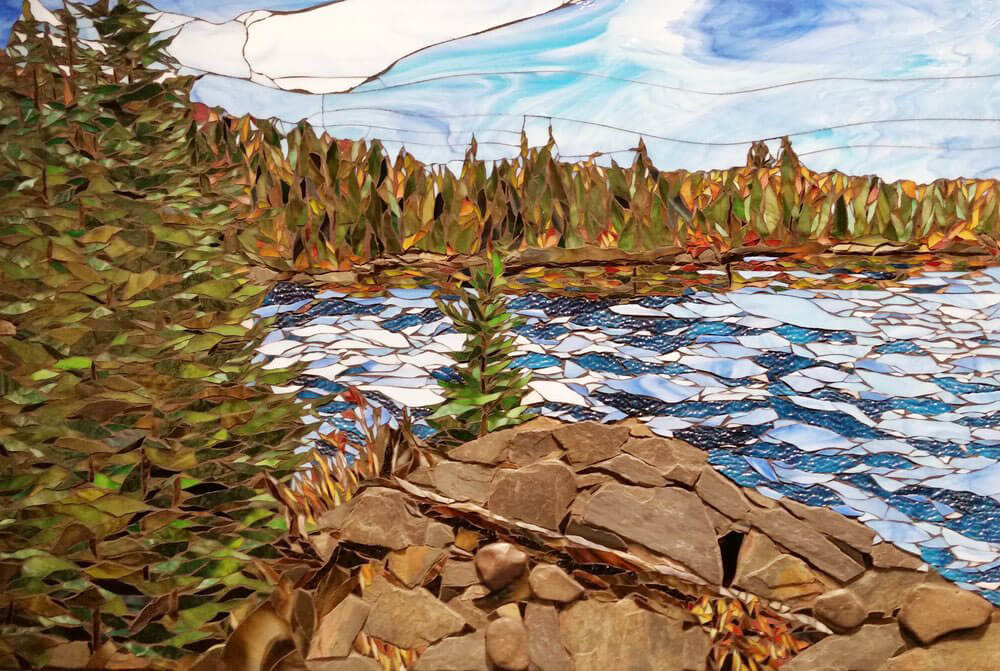
Not Rocks with Fake Skins
Most of the stones you see used in mosaic artwork are rounded river rocks, which is fine when they are unique stones collected from beaches and hikes and real life, but all too often they are the epoxy-coated or urethane-coated river rocks of the same type of stone from the same factory no matter where you buy them, which is really sad to me.
For starters, that polymer coating isn’t going to age gracefully over time, and the rocks are a generic commodity with clones everywhere.
When the most commercial-looking and least-archival materials in your mosaic are the coated rocks you added to give your artwork the look and feel of naturally gathered materials, something has gone wrong somewhere.
What has gone wrong is that most craft retailers sell cheap junk without regard to durability or sustainability or even the aesthetic quality of the art. As long as people will buy it, most craft retailers don’t care how fast the materials are discarded or how much your artistic experience is cheapened, especially if you are a child.
If you doubt this, notice how poorly made most craft kits are and how the emphasis is on packaging.
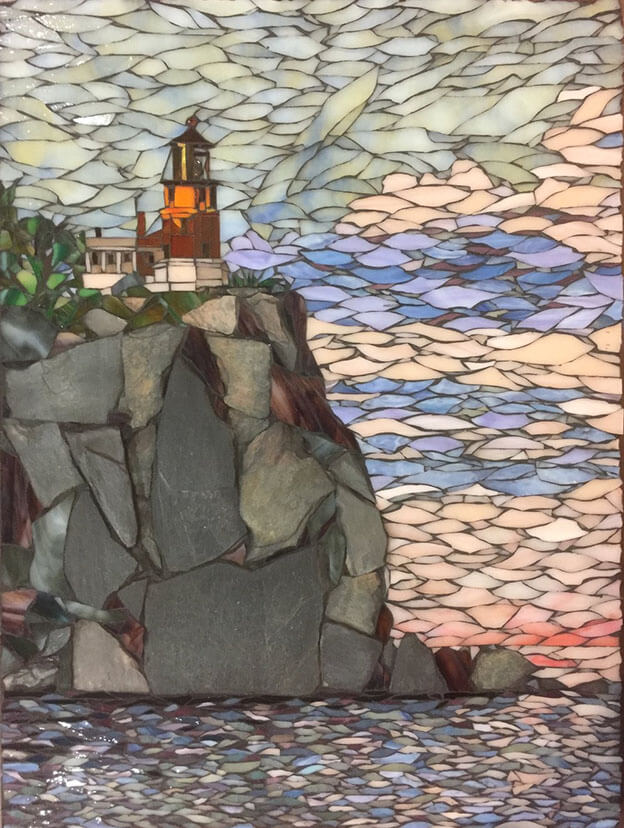
At Mosaic Art Supply, our strategy is different, and not just because we are artists and have to live with ourselves. We figure we are better off as a business to encourage excellence in ordinary people’s artwork and to promote contemporary mosaic as a fine art.
Showcasing mosaics from talented artists like Debra helps with that. Take a look and get inspired!
Real Rocks in Real Art
This week I saw some rough-cleaved shingles of stone used in some stained-glass mosaic landscapes by artist Debra D’Souza, and it really made me think about how found stones of different textures and shapes could be used in mosaic, especially to simulate things like cliff faces and boulders in the landscape, buildings even.
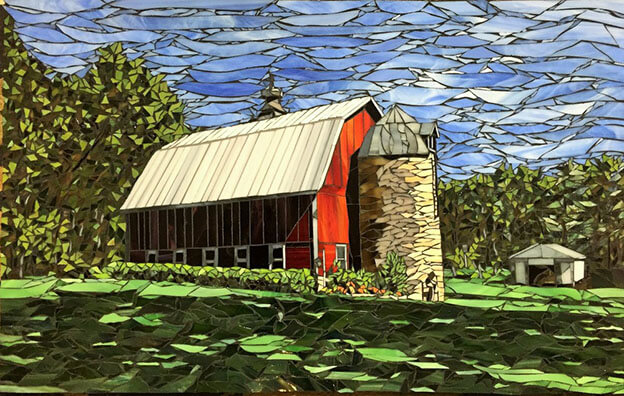
I really can’t stop imagining things rendered in stone that way now.
I look at Debra’s Barn stained-glass mosaic (above), and I imagine a “similar” composition with a large boulder in the left foreground and mountains rising diagonally above the tree line on the far right. If the silo (or house or houses or city) were “bricked” from stone chips, there would be stone at near, middle, and far positions along a line of site.
It’s the same when I see photos of things in mountain landscapes right now. My mind starts planning how they could be rendered using a combination of stained glass and rough-cleaved stone. I think Debra transmitted something viral to me with her art.
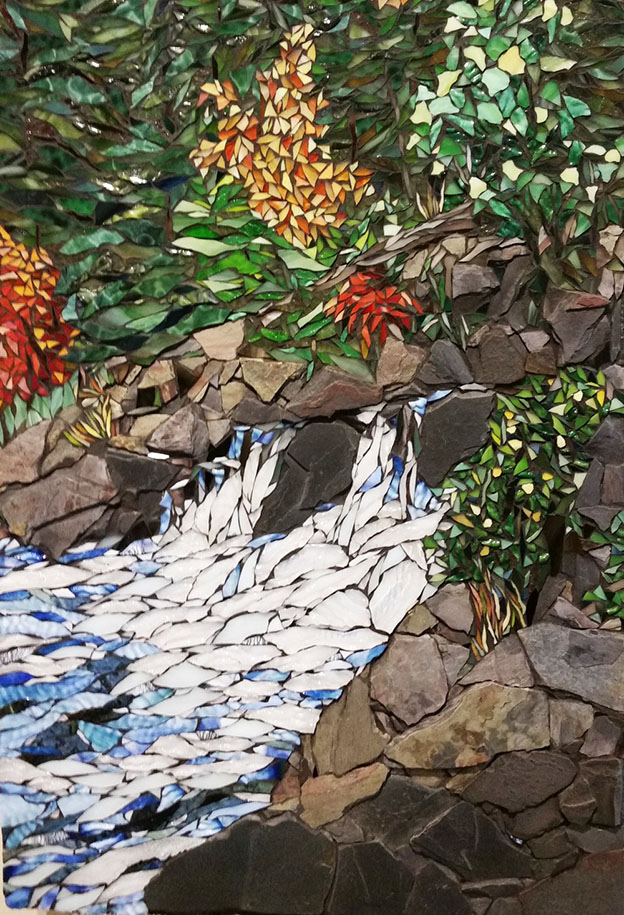
See More of Debra’s Mosaics
Mosaic is definitely a medium of visual art where you can learn a tremendous amount of the process merely by looking at the finished results.
You can see many more of Debra’s mosaics at her website.
I noticed that many of Debra’s landscapes have the cold northern light of Wisconsin as part of their verisimilitude. As a southerner who worships late summer afternoons, I was drawn to the warm lighting in these two:
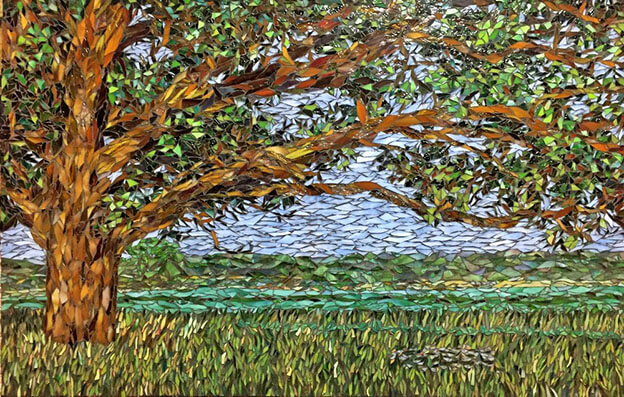
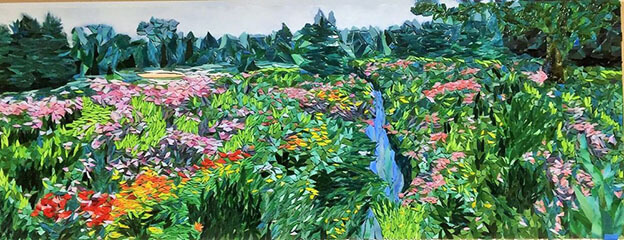
In Defense of River Stones
I love tumbled oval river rocks and think they are magical. I’ve always picked them up, and I’ve always been in awe of how long some of them took to form, particularly when the stone in question is a hard stone like basalt, which could have literally taken thousands of years to be shaped and smoothed into an oval. I love to use these stones in my found-object mosaics.

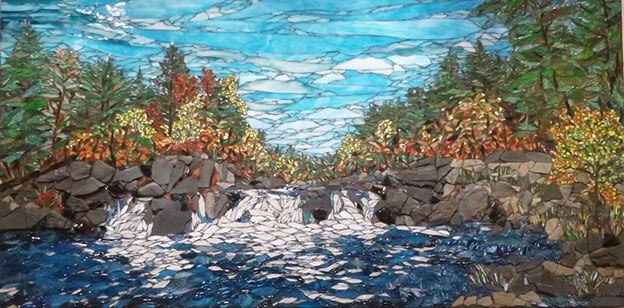
Leave a Reply